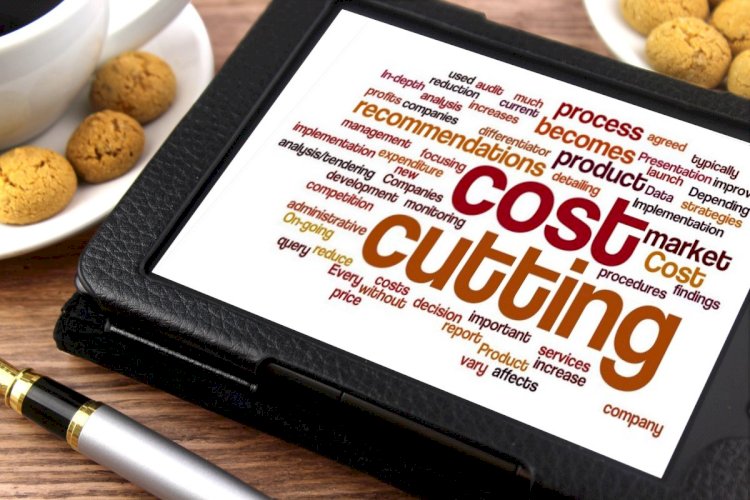Survival of Small Businesses — Part 3 — Ideas for Costs Reduction & Optimization
Part 3 in the article series on Survival of Small Businesses. Option 2 towards Cost Reduction & Optimization.

This is the third and final part of the series Survival of Small Businesses.
The first option that we looked at for survival was ways to increase sales and revenues.
The second option for survival is cost reduction. Something easier said than done.
This article provides a few ideas on ways to reduce costs or as we firmly believe and prefer, optimize costs.
1. Typically, most business owners look at Direct Costs which are directly visible to them and prick them frequently.
2. There’s not a sufficient degree of importance given to Indirect Costs and their impact on profitability.
3. Our experience tells us there’s an even bigger disregard or unawareness towards Opportunity Costs.
Indirect costs & overheads ‘eat away’ into profitability invisibly. Lack or no focus towards opportunity costs results in erroneous, preventable, and inefficient utilization of limited funds. Such opportunity costs are spread over a period of time and are like a parasite which eats away at the body.
Let me give an example from a recent client case study.
Scenario: There is a highly inefficient legacy ERP system running the operations for the business.
Issue: The faulty ERP process design led to a lot of issues related to material planning, production planning, HR planning (time spent in repeatedly capturing same data), lack of funds planning and so on.
Impact: A delay in deciding to replace the ERP with another modern web-based version leads to continuation of all such inefficiencies and the direct/indirect costs associated with operations in each of the operational functions/activities. The funds deployed on raw material procurement, production batches, stock management, salary paid (for the wasted time utilization), cost of funds etc. are hidden and will never be visible nor recovered.
One may argue that these are direct or indirect costs. True. However, the ‘time cost’ of delay in deciding on replacing the ERP system is what is wasting the funds which could have been deployed in more productive resources. Such systems are implemented over 4–6mths at a bare minimum. Till they are fully functional, the business is losing funds.
So what are the methods through which businesses can reduce/control/optimize costs in the post-Covid19 scenario.
We provide here a few ideas largely for manufacturing sectors. Some are quick and easy, and others are long-termers and difficult.
1. Renegotiate Debt Terms — this is the lowest hanging fruit and currently an ideal opportunity to renegotiate terms with banks and changing lenders if required to get the lowest possible rates. Banks would be asked to lend more and more in the coming months. Best to utilize their targets pressures to better business costs.
2. Raw Material planning — RM procurement processes in most SMEs are guided by instincts of the owners. Having a data driven RM requirement planning, spreading the Purchase Orders over a period of time will go a long way in funds requirements for the business.
3. Stock optimization — both at the RM side as well as FG side which is tied in and synchronized with supplier order management system and customers order processing system will help in preventing funds blockage. All business owners know the cost of funds blocked in such stock levels.
4. Material handling — is one of the most value-losing costs which is an outcome of wrong material handling processes and people manning such processes. Multiple instances of loading/unloading, storage or even something as simple as wrongly designed binning system results in losing money to material handling.
5. MIS Analysis — developing habit of being data driven and conducting critical and detailed MIS analysis will help the owners in knowing the precise status of their businesses. drilling down into different expenses and rationalising their need/necessity will help identify hidden costs which eat profits.
6. Manufacturing Automation — by hardware-based automation or software-based projection analysis of production capacities, scheduling etc. This will help minimize the risk of being impacted by availability of people, social distancing norms, unavailability of migrant workers who may or may not return among other issues.
The horrifying visuals of the migrants walking home must have been a harrowing experience for them and their families to be cautious of urban employers. Those with no local employment options will be forced to return to cities. Those who have lesser responsibilities might stay back and eek out an earning locally through MGNREGA. Overall I see an impact caused on manufacturing and construction centres across the country due to the horrifying experiences of walking back home.
7. Skill v/s Job requirement gaps — will be expected to be bridged. So that ONLY capable people are hired and deployed/utilized. In short hiring highly talented people so that they bring more to the table. There’s enough comments one hears about how “good people are in short supply” and “existing people are not contributing” and so on even during times of plenty. This should change in the post-Covid19 business scenario even more.
8. Multi-tasking people — existing employees shall be expected to play multiple roles, improve their productivity, and contribute more to be sustainable. This implies employees won’t have the luxury of doing what they were doing in the past. They shall have to evolve and do more. This also implies that business owners need to upgrade their methods to ensure that they are able to monitor what’s happening in all areas on the ground
9. Structure the organisation right — a badly designed organisation structure results in excess and overlapping manpower. Its invisible impact is inefficient and ineffective workforce. Taking the time out to get the organisation designed correctly and building the organisation and teams around it helps in reducing fixed salary costs.
10. Intelligent Marketing budget — by being cautious about which campaigns will show measurable results v/s being a sheep in the flock. Asking agencies hard questions about results will put pressure on them to deliver and not just talk.
11. Office Rentals — is an opportunity that Covid 19 has highlighted with the necessity to work from home. There’s a lot of roles which are possible to be accomplished from wfh or telecommuting either permanently or on a needs basis. With certain tweaks in work culture and operational methods a huge benefit can be availed by businesses.
Are these ideas enough? Definitely no. We are not even listing some of the obvious cost items which are controllable but not actioned because they are not on anyone’s radars.
There’s a lot of things which are possible and should be explored. Each business has their strengths which help them grow and their own issues and challenges which impact their growth. They need to identify and focus on those areas which would help them reduce costs and improve profitability to be able to survive and grow in the immediate future.
Comments/opinions/suggestions welcome.
#SurvivalofSmallBusinesses
Click Here To See More
What's Your Reaction?




















